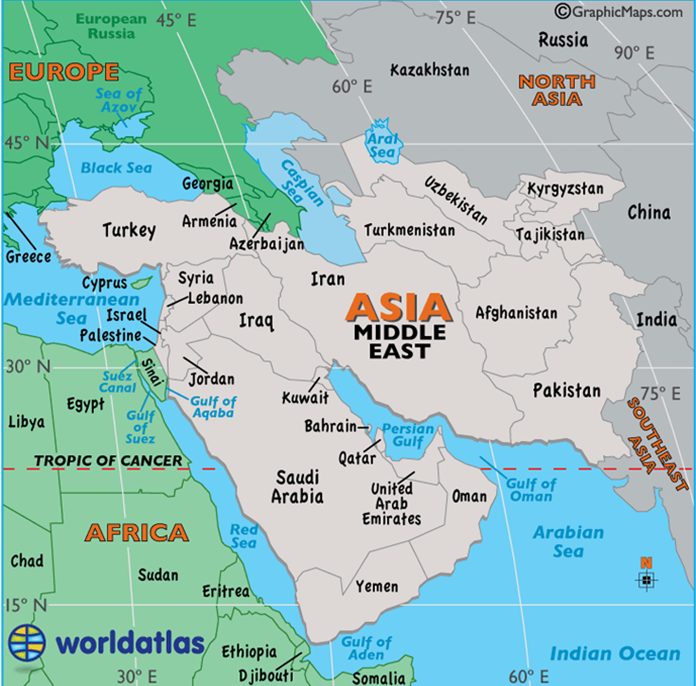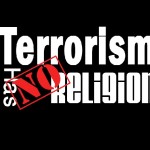Ambassador (R) Hasan Habib
Today, the Middle East is a region with multiple flash points and a growing degree of complexity and conflicts that affect the whole region and beyond. The destruction of Syria, the degradation of Iraq, the uprisings in Egypt and Libya, competition among the Gulf oil monarchies, the complex relations with Iran, social discontent, the ethno-sectarian divisions, rising Jihadism, ineffective US policy and the ongoing Israeli-Palestinian conflict are indicators of the growing complication of the Middle Eastern region. The Middle East and North Africa (MENA) have about 5% of the world’s population. It frequently gets media attention of conflicts, wars, undemocratic regimes, and the struggle for resources.
The recent history of the Middle East is closely linked to multiple traumatic experiences suffered by its populations over the last century. The struggle with colonialism, difficult decolonization, state evolution with authoritarian rulers, emergence of Israel and its conflicts with neighbors, struggle for hegemony and the interference of the major power leading to insecurity and mistrust in the region.
Conflicts that shaped the region
Some events that shaped the geopolitical structure a) the Iraq and Iran (1980-1988) b) civil war in Lebanon (1975-1990) c) the fall of the Berlin Wall in 1989 and d) the August 1990, Saddam Hussein’s decision to invade Kuwait. The end of cold war and the security of the oil supply brought the region to the attention of the West. In early 1991, Operation Desert Storm by the US and its allies forced Iraqi withdrawal and a harsh regime of sanctions on the Iraqi people was slapped. This resulted in anti-American backlash throughout the region. In 1991, the US Administration initiated a Middle East Peace Conference in Madrid. The “land for peace” formula was to be the basis of what was then called the Peace Process.
The Oslo Accords (1993 and 1995), and related memorandums, protocols, summits and conferences between Israelis and Palestinians have not resulted in any peace agreement acceptable to the opposing parties. All the peace initiatives have not stopped the growing Israeli settlements in the Occupied Palestinian Territories, or prevented the extremists on both sides from interfering attempts for a just and lasting peace.
Terror and wars in the 21st century
The 11 September 2001, committed by al-Qaeda gave space to the American neoconservatives (Neocons) to invade Afghanistan, with the “support of the UN Security Council”, to defeat the Taliban. This “war on terror” became the new buzz word for managing international relations, by force. Which in turn led to the US open support for the authoritarian regimes of the ME. In March 2003, the US carried out its regime change plans in Iraq, invading the country and overthrowing Saddam Hussein, this time without UN approval and disturbing the regional balances. The removal of strong man led to the rise of Iran as a regional power and submerging Iraq in long spiral of violence and sectarianism.
The US policies intensified the power struggle in the Middle East between two blocs: one led by Saudi Arabia and another by Iran. Turkey (Turkiye) also started interfering in Iraq and Syria with a view to control the Kurdish incursions into its territory. With President Barack Obama in power the new American foreign policy evolved with the clear aim of avoiding new adventures. The shock came on 14 January 2011 when Tunisian dictator Ben Ali was forced out of power due to “Arab Spring”. This soon touched Syria, where Bashar al-Assad’s regime violently reacted to the demands for reforms. With the right type of allies on Bashar’s side, the world couldn’t stop him. The energy self-sufficiency coupled with its prolonged stay in Iraq and Afghanistan, led the US Administration to demand from its allies to take more responsibility towards regional security. The new US approach led to November 2013, JCPOA between Iran and the five permanent members of the UN Security Council plus Germany to allay some fears of Iranian nuclear threat against its neighbors. Unfortunately, the conflicts that currently impact the ME are presented as a sectarian war. The ongoing power struggle between Saudi Arabia and Iran, though through proxies, is supported with resources, and sometimes direct involvement.
This has led to three regional blocs a) Iranian bloc (includes governments and militias of Syria, Iraq, Yemen, Hezbollah, Hamas and Islamic Jihad b) the Saudi bloc (includes Egypt, United Arab Emirates, Bahrain, Jordan and the Palestinian National Authority, and c) bloc led by Qatar (includes organizations linked to the Muslim Brotherhood). These loosely structured blocs operate with impunity and easy deniability often using unconcerned events to their advantage.
The Arab authoritarian regimes exercise tight internal control and depend on critical external support through exploiting their strategic value for the international powers as essential to the stability of the region. The West led by the US has been convinced that the alternative to the status quo is Islamist elements i.e. Radical. The ME affairs management depends on several difficult questions a) can Iran and its Arab neighbors live peacefully? b) will Israel agree to follow land for peace agreements? and c) are Arab monarchies ready to grant some sort of democratic rights to its growing restless educated youth?
Conclusion
With the biggest threat to the status quo leading to the rise of regional instability in the Middle East may lead to a Bangladesh like implosion. Some of the states could disappear, in a not distant future that may lead to wars between neighbors or a regional war. The question is it possible to stop the processes leading to above one of these scenarios? What steps are required to avoid the emergence of far more serious problems?
The United States is trying to stop the above by applying pressure on Iran, maintaining its alliances in the Middle East, avoiding the fall of Syria and Iraq yet avoiding direct military involvement. It is normal for the US State Department to manage regional affairs through its allies. The European Union lacks a clear strategic vision and leadership capacity required for the Middle East. The Middle Eastern countries have been deeply impacted by different global trends and profound transformations are taking place, both socially and politically. This raises the level of risks for regional instability. Though making predictions about the ME is difficult, owing to lack of credible data, one can simply say we have to be ready for the unexpected. An unstable future (in the short term) can be predicted for the Middle East.
Ambassador (R) Hasan Habib, Chairman, Pakistan Council on Foreign Relations, Senior Fellow, Institute of Business Management.










